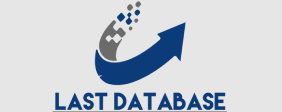Compared to B2C (business-to-consumer) enterprise, operating as a B2B (business-to-business) company demands a much different marketing strategy. Notably, you have to focus on appealing to a number of individuals and decision-makers, not just a single customer.
Sales funnels are longer and more complex, so you need high-quality B2B content writing to captivate leads and nurture them until they’re ready to close.
B2B Content Writing vs. B2C Content
B2C content often appeals to individual emotions and focuses on delivering a compelling and immediate call to action.
In many Ws Data cases, high-value content is more qualified to convert a lead to a customer with little else to go on. Since the customer is the first and final decision-maker, they can pull the trigger immediately.
By comparison, B2B content is much more time-consuming and must work on multiple levels.
In many cases, you may have different versions of the same content to show to different people within a single organization.
For example, you may have a sales pitch geared toward hourly staff members, then a white paper or a presentation to sell the concept to higher-level management or executives.
Here’s a more in-depth breakdown of the differences you can find between B2C and B2B content:
Emotional vs. Rational
There’s a misconception that B2B customers only think logically, not emotionally. This isn’t exactly true, what is more accurate is that the emotions of a B2B customer are rooted in different reactions and consequences.
For example, a customer may make an impulsive purchase because they’re hungry or the product can help them at that moment.
A B2B client, though, may think about how well the product will impress their bosses.
Both decisions are based on emotion, but what changes is the “next step.”
A customer decides to purchase the item while a B2B client decides to pass marketing materials on to their superior.
How to Write Captivating B2B Content
Since your product or service is geared toward an entire company, you don’t necessarily have to appeal to individual pain points. However, if possible, you should incorporate both levels within your content.
For example, let’s say you’re selling customer service software. Individual reps may like it because the software is easy to use and reduces their workload. Executives may appreciate the FJ Lists program because it improves productivity and cuts labor costs.
Related Posts
Flesch Reading Ease Score Is It Still Relevant in 2023
Online content demands more than just sprinkling keywords and churning…
A Technological Evolution
From Finger Holes to Fingertips: The journey of phone numbers began…
Maximizing Reddit for Effective Marketing
Reddit is a platform that is often underestimated by businesses.…








